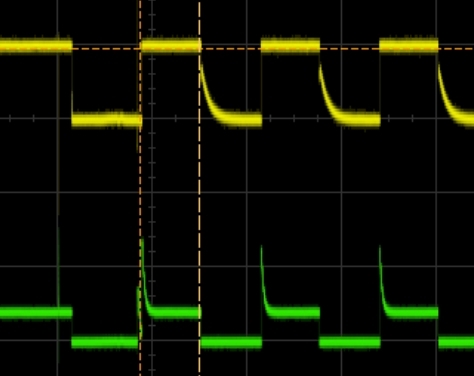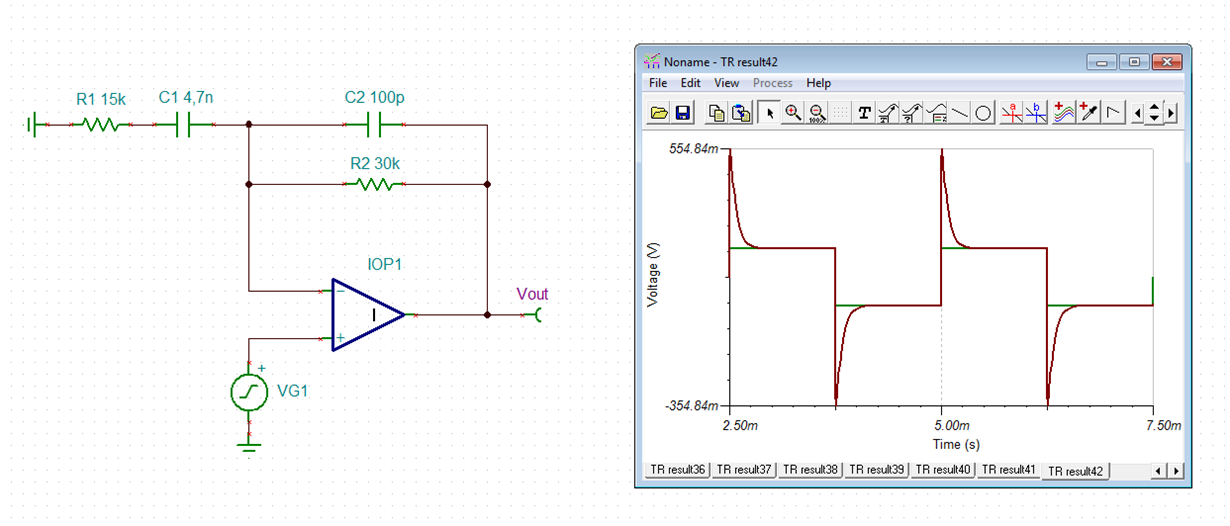Other Parts Discussed in Thread: TLV2314, OPA2314, TLV9052
Dear,
I'm trying to use your TLV9002 instead of OP2314/TLV2314 for our product. Op-amps are used for transimpedance amplifiers. And Both operate by same circuit and operation method. But there is a difference in output waveform. The unwanted pop-up signal does not appear in OP2314.TLV2314's output waveform, but there is the pop-up signal (projecting signal) in TLV9002. Input models are 4700pF-20kohm in serial, or 4700pF-15kohm,or 4700pF-10Kohm in serial. It is connected at negative pin of Op-amp. the pulse(200~500Hz) is applied to positive pin of Op-amp. When using TLV9002, the pop-up signal appears in 4700pF-20kohm in serial, or 4700pF-15kohm in serial of input model, but not appear in 4700pF-10Kohm of input model. I'd like to know what characteristic differences in op-amp causes this difference and what is the solution. Please see the figure below:
• Circuit diagram:
• Output signal (input model : 20K – 4700pF in serial)
Thank you,
MG





